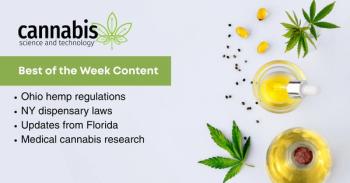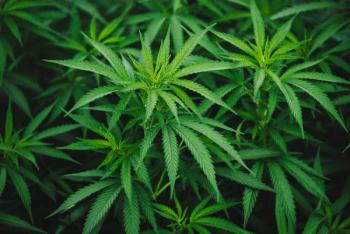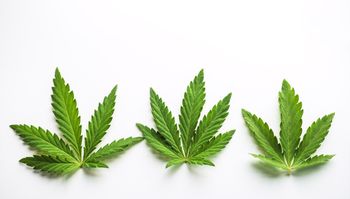
Cannabis Science and Technology
- January/February 2022
- Volume 5
- Issue 1
- Pages: 38-41
Autoflowering Genetics Present Unique Opportunities
In this piece, we touch on the benefits and challenges associated with autoflowering genetics, and provide justification for why these unique varietals may be the catalyst for making cannabis medicine more accessible and approachable for the general population.
Until now, the discussion about cannabis cultivation has been dominated by the debate over indica versus sativa. However, with the recent emergence of autoflowering varietals, cannabis ruderalis-based genetics have garnered significant notoriety for various reasons; including their relative ease to cultivate and their independence of a traditional photoperiod. In this piece, we touch on the benefits and challenges associated with autoflowering genetics, and provide justification for why these unique varietals may be the catalyst for making cannabis medicine more accessible and approachable for the general population.
As the cannabis industry continues to evolve and progress from one perceived “fad” to another, one has to wonder to what extent these new developments will improve the growth and sustainability of this multidisciplinary enterprise moving forward. For example, the seemingly systematic adoption of cannabidiol (CBD) as a panacea, has made for its rather ubiquitous integration into a wide range of household products: from creams and lotions to BBQ sauces and even pillows. Unfortunately, this has led to a FOMO-induced (fear of missing out) mania that saw Group III cannabis (hemp) cultivation experience exponential growth, which ultimately triggered a precipitous decline in hemp commodities pricing, with many once-keen farmers and entrepreneurs holding the bag. One could argue that the unregulated surge in hemp cultivation fueled its own demise and did not make a resounding beneficial impact on the cannabis industry for more than a couple of years. With that in mind, is there something else out there on the cannabis cultivation horizon, beyond the mass production of a single cannabinoid, that can have a lasting and sustainable effect on this burgeoning industry? The answer may come from a humble provenance.
Cannabis ruderalis genetics originated from Asia and Europe, where they adapted to extreme environments and relatively short growing seasons. Ruderalis plants are generally short and stocky compared to their indica and sativa counterparts, but are most famously known for producing flower material that is grown independent of photoperiod. As a result of this characteristic, ruderalis-based varietals are often referred to as “autoflowers” as they uniquely flower in conjunction with producing vegetative mass. Ruderalis genetics are often unfairly characterized by the synonymous term “Ditch Weed,” which is a reference to the robust ability to grow almost anywhere, such as the barren terrain one might find on the side of a railway line, and its relatively low phytochemical content. Many associate ruderalis varietals with “fiber-type” hemp, which generally expresses very low levels of the primary cannabinoids (tetrahydrocannabinol [THC], CBD, cannabichromene [CBC]), and little-to-no terpene content. Nonetheless, the latest commercially available autoflowering genetics have come a long way in recent years, both in phytochemical production and in the ease of use.
Benefits of Autoflowers
One of the most compelling attributes of autoflowering varietals is their ease to grow. Because of their independence from the traditional photoperiod, autoflowers or “autos” can be grown by anyone from a renowned Master Grower to a keen newbie with little-to-no experience. Imagine going into your local grow store and buying an auto seedling in a 5-gallon pot of premium soil that you can then put on your porch or in a window and enjoy cannabis cultivation on the easiest level. It’s akin to the “set it and forget it” style of making a delicious pot roast (pun intended) in your Instant Pot while spending your time away from the kitchen. And while the perception of cannabis as a viable medicine is continuing to expand well beyond the initial sub-culture, autoflowering varietals could be the gateway for any untrained, yet interested party, to dabble in personalized cultivation, thus making cannabis more approachable en masse.
It’s important to mention that current autoflowering varietals express all of the same medicinal benefits and phytochemicals (cannabinoids, terpenes, and flavonoids) as their photoperiod counterparts, with the additional ability to grow and flower pretty much anywhere in the world. Furthermore, using regular non-feminized auto seed for food and textile crops is a reproducible process that could create unique economic opportunities for developing nations with very little investment.
Additionally, autoflowering analogs of specific photoperiod strains can be produced through selective breeding cycles, just like any other genetic. The ability to breed autoflowering characteristics into any Groups I, II, and III strain of cannabis has allowed the industry to enjoy a much more robust repertoire of options, compared to the undesirable ruderalis genetics that occupied grow rooms as little as 5 years ago (see Figure 1).
Another positive attribute of autoflowering varietals is the relative speed of their growth cycles. Autoflowers outpace their photo-dependent counterparts quickly after germination, reaching their adulthood after around two to three weeks versus four to six. From there, autos immediately begin their reproductive stage, producing the first pistils that will multiply into buds. But the vegetative growth doesn’t stop at this point. Autoflowers continue to show how specialized they are in producing plant material quickly, as they grow in stature rapidly through the first month or more of flowering (Figure 2). After that, outward growth comes to a halt and the plant focuses on producing terpenes and cannabinoids. Historically, autoflower varieties have taken from 12-14 weeks from germination to reach their height of ripeness. Today’s skilled breeders have created genetics that produce better quality flowers in an amazing 8–10 weeks from germination. In contrast, common photo-dependent cultivars need an additional 4–6 weeks of long-day, vegetative growth before their 8–10 weeks of flowering time to achieve the same production.
Drawbacks of Autoflowers
Autoflowering genetics have been characterized as having generally poor taste and aroma profiles; in many cases characteristic of fresh cut grass and hay. Historically speaking, the phytochemical profiles of many autos have been relatively devoid of terpenes and flavonoids. Breeders have been moving forward with these original ruderalis types and dramatically improving their flavor and aroma by mixing them with market proven genetics and selecting for the auto flower traits.
Additionally, there is very little time during an autoflower growth cycle to address critical issues in the grow. If you are not growing for commercial use then airy buds and smaller-than-average yield are no big deal. However, for a farm operating on thin margins, bud structure, yield, and phytochemical content can be make-or-break issues. Understanding how to optimize growing conditions and feeding regimens is key for scale production of these genetic types. As we drift further away from the ruderalis tendency and only identify the autoflower trait we see less and less of these issues, but it is important that we feed these plants for dense flowers, having a readily available source of organic nutrients abundantly available in the soil for uptake as needed.
The major selling point of an autoflower is its ability to flower under a myriad of lighting cycles. However, this is also a downfall of this type. If you identify a winning phenotype it is not possible to take a clone that can be perpetuated for selfing. Even under a 24 hour-a-day lighting cycle it will continue to flower. Through filial breeding you can work varieties into a close representation of uniformity but this is a daunting task, especially when creating feminized seed. It is important for many to use feminized autoflowering genetics as the males can and will drop flowers and pollen very quickly after germination. One missed male will pollinate and seed your entire crop. Furthermore, to get an auto to reverse you must start your chosen reversal method very quickly leaving very little time to observe each plant’s genetic expression. It is imperative to start multiple plants for reversal so you can select your actual donor further into flower. This takes time, daily observation, and a bit of luck. Ideally you will find a pair, one reversed one female, that are nearly identical to each other, from which to create your first filial generation.From there you can further work that line using the aforementioned strategies until you reach uniformity. Most home growers don’t mind autoflowering genetics that aren’t exactly uniform but at a legal market level the crop batches must be uniform for accurate tests and consistent product. This is commonly achieved with clones from a mother that are 100% the same. The inability to clone autoflowering genetics makes this nearly impossible. Therefore, all autoflowering genetics must be grown from seed.Even with a years-long lockdown and uniformity breeding regimen on these genetics there is always a chance for a genetic mutation in a seed that can express in many ways. It could be as benign as a differing terpene expression or as detrimental as a hermaphrodite that pollinates and dramatically drops the value of your crop.
Conclusion
When done properly, one can create an autoflowering genetic that is uniform, consistent, and able to produce multiple crops per year in outdoor or greenhouse settings with very little additional work and no need for supplemental lighting. It is also amazing for locations on the globe with +/- 12/12 hour lighting cycles where typical plants flower before the vegetative cycle can complete, or where there are highly variable lighting conditions. Autos are plants that, at the base level, are extremely simple and fun to grow for a home gardener or hobby grower, but strict steps and robust knowledge are crucial to use them at a commercial level. Is it extremely important as a commercial grower not to buy random market autoflowering genetics because of likely, massive heterogeneity in flowering times, aroma, flavor, plant morphology, and analytical testing results. With all of that being said, it’s time to celebrate autoflowering genetics and the opportunities that they present for more folks to explore cannabis and hemp cultivation.
About the Authors
Adam Jacques and Christian West are with ZED Therapeutics. Zacariah Hildenbrand is with Curtis Mathes Corporation. Direct correspondence to:
Articles in this issue
over 3 years ago
In Search of the Golden Potency Methodover 3 years ago
How Are Tetrahydrocannabinol—THC—Isomers Entering the Market?over 3 years ago
Cannabis Research Is Cannabis Scienceover 3 years ago
How Does Carbon Dioxide Enrichment Affect Environmental Control?Newsletter
Unlock the latest breakthroughs in cannabis science—subscribe now to get expert insights, research, and industry updates delivered to your inbox.





